One of the main inspirations for Onisha and I to visit Sarawak Borneo was to visit the Iban people and their traditional longhouses. Wiki – (The Ibans are a branch of the Dayak peoples of Borneo. In Malaysia, most Ibans are located in Sarawak. Ibans were renowned for practicing headhunting and tribal/territorial expansion and had a fearsome reputation as a strong and successful warring tribe in ancient times.)
The native tribes of Borneo have always fascinated me since I was young. Aside from being known as the headhunters, they are one of the few tribes left in Malaysia/Indonesia that still preserve many of their cultural practices. Specifically the tradition of Tattoo is still used as a mark of spiritual belief and to honor their ancestors. If you know me you know that I love traditional tattoos, and that I have a few of my own. I have a ‘bunga teruong’ or Borneo Rose on my right shoulder and also the design patterns from the headhunter shields along my right arm. The bunga teruong is traditionally tattooed on both of the men’s shoulders to ward off evil spirits. The design patterns from their shield can actually be seen all over Sarawak on private buses, tile patterns, material and signs.
- Tiles in Sarawak
- Material Patterns
- Tour Busses
Once we arrived in Sarawak, I quickly booked an overnight tour to the Iban longhouse to visit with the tribe, learn about their ways and sleep in a traditional longhouse. The tour was actually a little pricy coming in at about $400.00 for both of us. “ouch!” For me I knew it was a once in a lifetime opportunity so I had to go. The tour included a hotel pick up/drop off, a traditional Iban longboat trip up the river and meals with the Iban host family. It also included an English speaking guide and a demonstration of the blow darts.
The trip started at 9am and included a minibus ride for 4 hours to a jetty where we caught a longboat to go up river. We stopped a couple of times for food and supplies for the dinner that was to be cooked by our tour guide with the help of the local family in the long house. Onisha and I thought we lucked out this time as we were the only two tourists in our minibus, but as we arrived at the markets and lunch area we quickly realized that there were at least 20 more tourists from different tour companies on the same trip as us to the same longhouse visit. Unfortunately this is one trip that you have to book a tour in order to visit an Iban family. At the stops there were wet and dry markets where you could buy everything from hand made baskets to dried chillies. After about an hour at the markets we left and continued our way to the jetty.
- Hot
- Market
We finally arrived at 3pm to the jetty. We were met with our Iban boat captain/navigator and some brightly colored long boats. These boats were 15 feet or so and had room for about 6 people, an ice chest and all of the luggage. They were made of wood and had a single motor in the back. Our trip would be up river against the current and we were informed that due to the weather, the water level of the river was really low and that we may need to hop out at some point to help push the boat along. Sounded like fun! The trip up river takes about 40 minutes to reach the village where the long houses are. Our navigator was an Iban man that lived in the longhouse that we were visiting for the night. He was our first encounter with the friendly Iban people. I sat right in the front with my camera and Onisha sat right behind me with her life jacket on. I would have to say it was a highlight of the whole experience. As you ride up river you can see old bridges and different longhouses along the way. You also see the native people washing clothes and bathing in the river. This was exciting to see the people living off of the land and in nature. A few times going around some shallow parts our Iban navigator jumped out and pushed out boat. We luckily didn’t have to push since Onisha and I were the only ones from our tour along with our guide and our driver. Some boats we saw going up river were full of 4 or more tourists along with all of their gear, navigator and guides. They would eventually get stuck and two people had to jump out and push them.
- Long Boats
- Our Iban Captain
- Old bridge
- Pushing us
- The river
- Stuck
After 40 minutes or so up river we stopped at the longhouse jetty where we would dock for the night. At this point it was really exciting as Onisha and I exited the boat with anticipation of what we were going to see. Was it going to be like the old photos of the headhunter tribes with the women and their copper rings, or the men with their warrior attire and blow darts in hand. As we walked up the hill to the longhouse we were greeted with a gong that was used for everyone that was arriving at the house. There were chickens and roosters running all around. Once we entered the longhouse we were surprised to find out that the Iban tribe and surrounding tribes were actually very modern. They have limited internet, TV and a generator for electricity that ran from 6-10pm. Most of them were just like us except they lived in a communal longhouse. A longhouse is about the length of a football field and it holds about 20 or so families. The longhouse community is measured by how many doors it has. Each door holds a separate family and in the front is the Chief’s house. Each family is responsible for their own income and the amenities in each of their rooms. The host family that we stayed with lived very simply and had a kitchen and a fireplace in the back.
- Our host family house
- Neighbours
Once we settled into our host family’s room we waited around for about 3 hours until dinner was ready. During this time our host was supposed to be explaining the Iban culture and history of the house to us, but he disappeared and we did not see him until dinner. Onisha and I sat and listened to other tour guides explaining the Iban culture to other groups that were hosted around us. I also took this time to take some photos of the Iban people doing their daily activities. Some would sit in groups and just talk and drink tea and coffee. Others were out fixing the longboats. Our host family leader was very friendly to me and kept trying to communicate with me so I took a few pics of him and his daughters playing around.
- Our host
- Socializing
The longhouse was very warm and humid. The men walked around without their shirts displaying their Iban traditional tattoos, and the women were all wearing sarongs. I took my shirt off to cool down and blend in. I immediately found eyes staring at my artwork. I found out later that the Iban families were asking who I was and that they thought I was an Iban tribe member because of my face and tattoos. 🙂 At about 7pm we were invited into our host house to sit and have dinner with them and our guide. The food was a traditional meal with a mixture of rice, okra, chicken with curry sauce and some other vegetables. During our dinner beds were setup out side in the longhouse hall. They were two small mattresses with a mosquito net hanging above. All of the visitors slept in these makeshift beds for the night.
- Hand Made Baskets
- Iban designs
- Iban Longhouse
- Tea
- Our captain
- Iban woman
- Welcoming new guests
- Our beds for the night
- Traditional Dinner
After dinner there was a traditional dance and music show put on by all of the young members of the longhouse as well as the chief. This was another experience that Onisha and I had a different expectation for. As we watched the performance of the dancers most of the members behind them were just socializing and talking. It seemed to us that they were just doing the ceremony because they have to for the tourist. At first I was put off by this, but then I realized that if I had to do something every night for a different group of people who were just there to take pictures in my house I would be very jaded as well. After the ceremony, gifts were given to the tribe by all of the visiting tourists. Most of the gifts were candy for the kids, and some like us brought paper and pencils for art etc. At 10pm the generator was shut off and lights out.
- Sunset
- Headhunter
- Traditional Tattoo and clothes
- Music
- Young warrior
- The Chief
- Traditional Iban Dance
The next morning we woke up to have breakfast with the family and then shower. I took some more time to walk around and take some more photos of the families. The men were all sitting together in the front of the longhouse smoking and having tea. Some of the youth were fixing their fishing nets and some were just hanging out. At 11am it was time for our blow dart lesson. We learned that the blow darts were used against enemies and that they would put poison on the darts to paralyze their victims. The pipe that is used for the weapon in about 4 feet long and was made from a solid piece of wood that was hollowed out slowly until there was a hole from one side to the other.
- Fixing the fishing nets
- Basket Hoops
- Young Iban
- Going to wash the clothes
- Blow Dart Oni
- Darts and bayonet
Shortly after the blow darts demonstration is was time to pack our things and head back to Kutching and our hotel. After the longboat ride back to the jetty we hopped in our minibus and headed back to town. Another 4 hours with stops at the market once again for lunch. Overall Onisha and I thought that the tour itself may not have been worth the money, but the once in a lifetime experience with the Iban people will be something we will never forget.

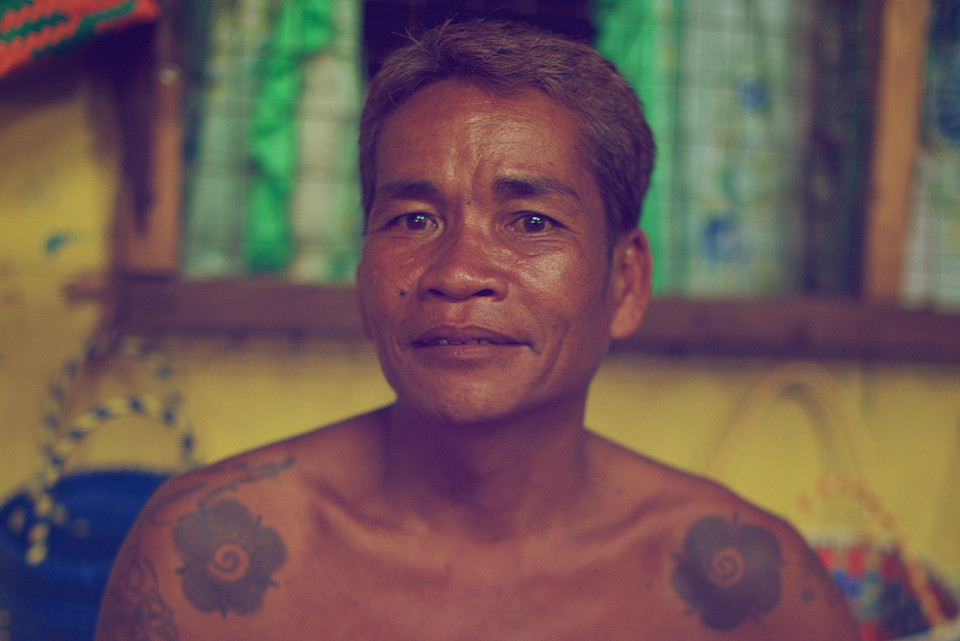
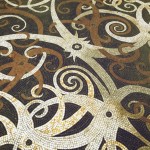
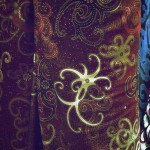
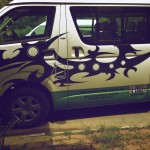

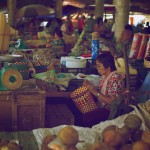
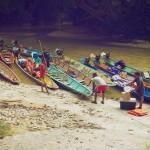
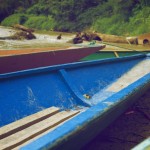
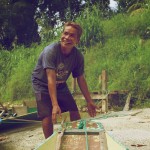
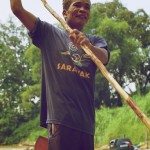
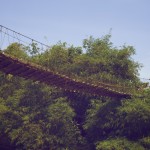
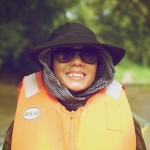
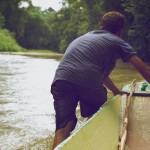
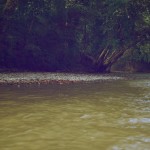

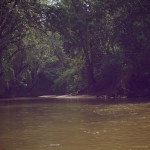
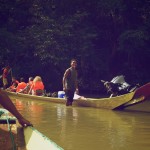
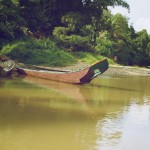
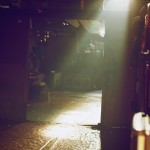
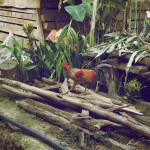
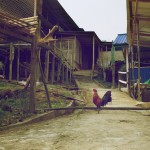
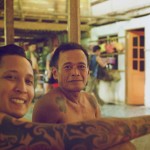
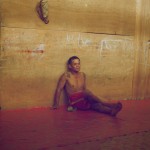
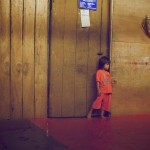
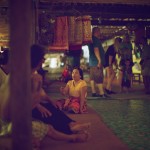
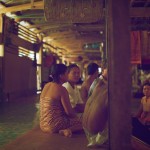
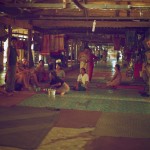
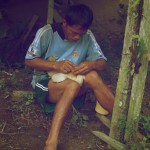
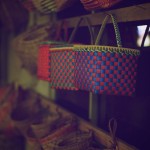
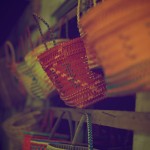
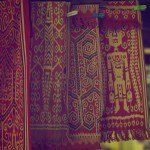
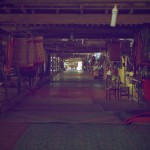
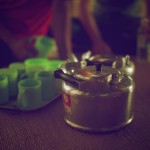
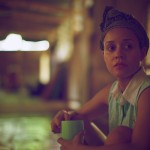
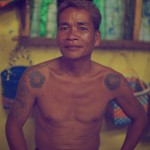
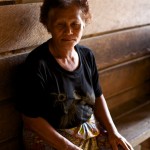
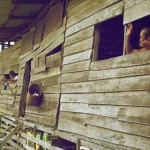
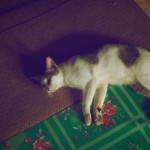
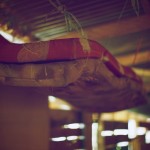
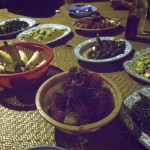
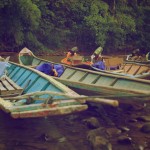
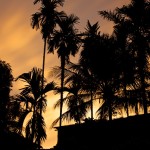
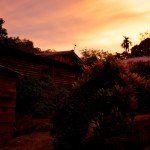
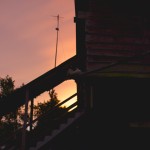
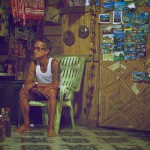
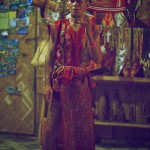
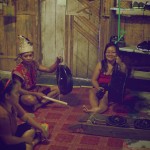
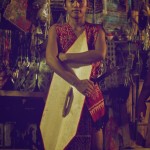
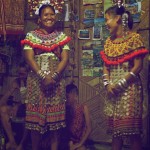
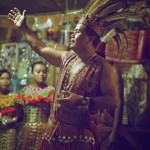
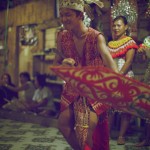
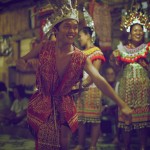
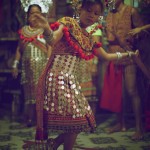
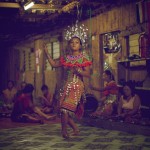
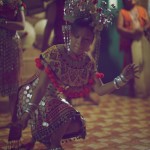
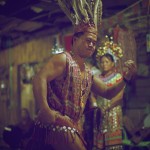
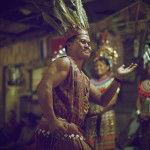
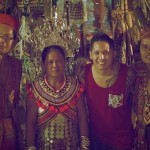
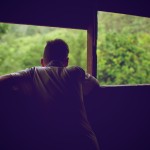
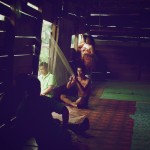
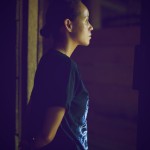
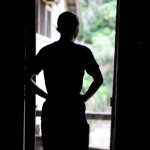
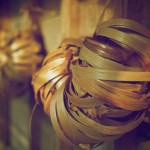
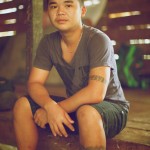
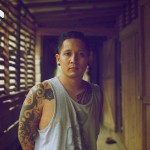
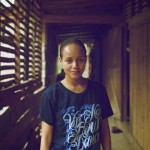
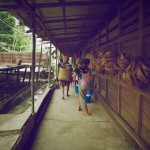
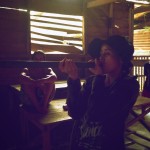
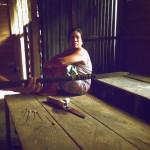

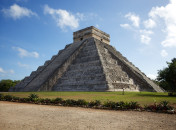
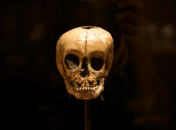
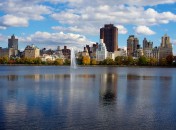
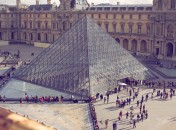
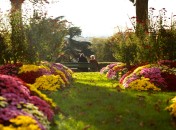
3 Comments
Iban – a wonderful adventure! sorry for the high price – your tour groups are probably the main source of income? Be safe!
Yes, Ammie. We think it is one of the only sources of income as they are still isolated by where they live by the river.
Love the sunset pictures. Oma would love the one with all the chili”s
b